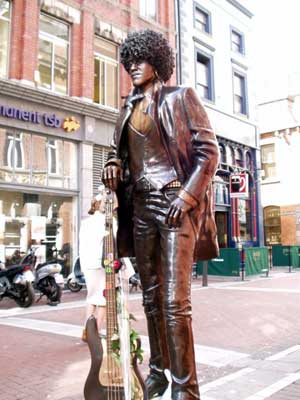The Irish in the Caribbean 1641-1837: An Overview
Irish Migration Studies in Latin America
Volume 5, Number 3 (November 2007)
pages 145-156
Nini Rogers, Honorary Senior Research Fellow in History
Queen’s University, Belfast
The arrival of Europeans in the Caribbean brought about irreversible demographic change. Decimated by defeat and disease, ‘peaceful’ Arawaks and ‘warlike’ Caribs alike ceased to exist as an identifiable ethnic group, their gene pool dissolving into that of the newcomers, where it died away or remained un-investigated. The replacement of native peoples by European settlers was desultory. After their arrival in 1492 the Spanish explored and settled the Caribbean islands with some enthusiasm. The extension of activities into Mexico and Peru, however, rich in precious metals and with a structured agricultural work force, swiftly eclipsed the islands as a destination for settlers. More northerly Europeans (French, English, Irish, and Dutch) arriving later, slipped into the more neglected Spanish possessions in the Leeward Islands (today’s eastern Caribbean) or Surinam, on the periphery of Portuguese Brazil. These seventeenth-century colonists initiated the process which turned the Caribbean into the world’s sugar bowl. To do so, they imported enslaved Africans who soon became the most numerous group on the islands. In the nineteenth century, as sugar receded in economic importance, so too did the remaining whites, and the Caribbean assumed its present Afro-Caribbean aspect.
Changing the islands’ flora, fauna and demography, the newcomers also imported their religious and political systems and ‘great power’ rivalries. Those who founded the colonies were eager for royal support and recognition, thinking very much in terms of subsequently returning home to enjoy wealth and importance. As their tropical possessions proved themselves valuable, kings and governments became more and more determined to retain and expand them. The sugar boom made the Caribbean a cockpit for warfare among the European powers. This presented difficulties and opportunities for the Irish. Divided at home into colonists and colonised, when seeking their fortunes in Europe’s overseas empire, they had to choose which king to serve, which colony to plant.
Irish Inter-Racial Marriages and Affairs
In 1775, nineteen-year-old Charles Fitzgerald, naval officer, brother to Lord Edward Fitzgerald, and third son of Emily, Duchess of Leinster, wrote to his mother with literary panache that ‘the jet black ladies of Africa’s burning sands have made me forget the unripened beauties of the north’. A few months later he followed this up with the news that she could look forward to ‘a copper coloured grandchild’ (Tillyard 1995:331).
Relations between Irish men and African women were as much a staple of the Caribbean experience as malaria, yellow fever, hurricanes, rum drinking and turtle soup, but it is an area of life which rarely appears on the written record. The earliest emigrant letters hint at this scheme of things. In 1675 John Blake, a merchant settler from Galway admitted to the veracity of his brother Henry’s accusation that he had brought a ‘whore’ from Ireland to Barbados along with his wife, but excused himself on the grounds of domestic necessity; his wife’s ‘weak constitution’ meant that she could not manage everything herself ‘for washing, starching, making of drink and keeping the house in good order is no small task to undergo here’. He could not dispense with the services of the prostitute until the African girl he had bought was properly trained in household matters (Oliver 1909-19, II: 55).
Wills and investigations instituted over disputed inheritance would sometimes reveal lifelong secrets concealed from the family back home. Thus in 1834 R. R. Madden (anti-slavery activist and future historian of the United Irishmen—see Burton’s article in this journal) penetrated into the mountains of Jamaica in order to view a deceased relative’s plantation, long the subject of a chancery suit. There he was startled to find several mixed-race cousins and their elderly mother, his uncle Garret’s mulatto concubine (Madden 1835, I: 171)…
Read the entire article here.





